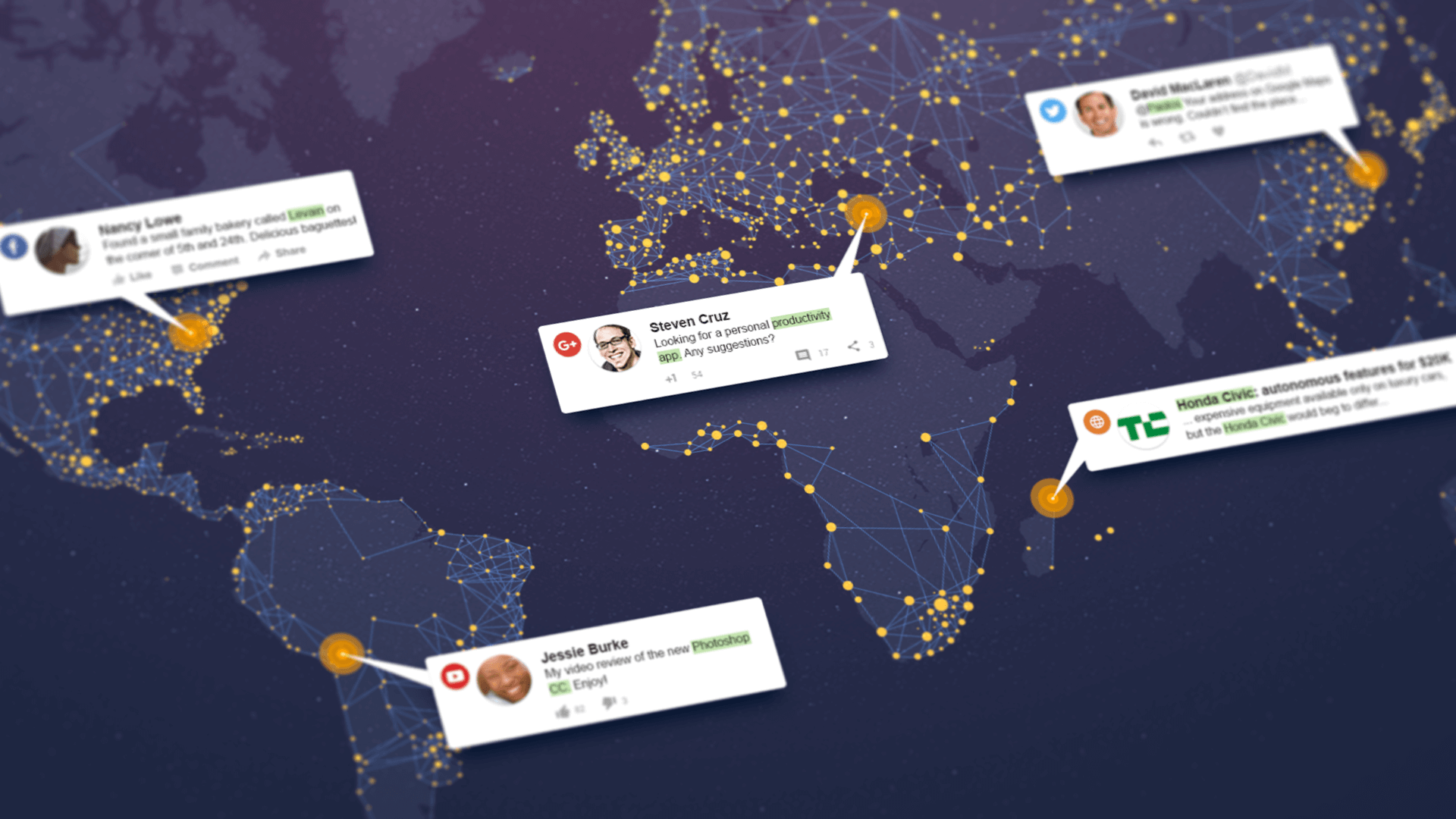If you have a business, you are probably spending a lot of time trying to find the latest marketing tips to apply in your company, especially on social networks. Social media has great potential to increase your sales. Social listening allows you to discover what social media users are saying about your brand and your company. Keep in mind that in the impressive world of social networks, there are about 4.2 billion active users, almost twice as many as five years ago.
These users spend an average of 2 hours and 25 minutes on social media every day. These nearly 2.5 hours offer you an incredible opportunity to boost brand awareness, develop customer relationships and even make sales directly on social platforms. But, to take full advantage of the power of social media, it’s important to listen to what users are saying about you. Social listening is your ally to get that information and turn it into optimal marketing strategies.
What is social listening?
You can not forget that, like your website, social networks become part of the business infrastructure, where you can extract valuable information. Social listening is the process of monitoring social networks that relate to specific topics, keywords, phrases, reports, conversations, brands, competitors, or statements by an authority assignment writer. This is done through appropriate applications and tools, which allow you to monitor what users say and their reactions, i.e., identify and analyze their emotions.
Social listening can be applied to companies of all sizes, contributing significantly to the “construction” of their online community (Community Building). In addition, it could be said that, in a way, it has managed to replace the traditional questionnaire used for consumer research with quantitative and qualitative research and analysis methods. The public (unknowingly) reveals their honest opinion about your brand through reactions, posts, and conversations without having to be asked to fill out a form with questions!
Do companies need to use it?
Social listening is an excellent tool for companies to get a clear picture of their presence in the online environment. Its use can be vital for your business since it allows you to create successful network content management. These contents are customized to the target audience, thus optimizing social media posts. Additionally, it allows you to provide effective customer service to learn about consumer behavior.
Moreover, this tool allows you to save your company’s reputation. By reacting immediately to dissatisfied customers who post negative comments on social networks or even forums, you can stop the negative interaction. Of course, you can only achieve this through continuous monitoring so that there is an immediate and lasting response from the company to the management of adverse comments and situations. Don’t forget that social listening contributes to building your brand successfully.
How can a company take advantage of it?
To get the most out of it, you have to listen everywhere. Find out where your audience is talking about your brand, not just what they are saying. This implies that your social listening program should cast a wide net. Conversations about your brand on Instagram will likely differ quite a bit from what they’re commenting on LinkedIn. Also, it may be the case that they talk about your brand all the time on Facebook but don’t even mention you on Twitter. Knowing where they talk about you is just as important as knowing what they talk about you.
Once you know what they say and where they talk about you, take actions that will allow you to get the benefits you expect. Social listening is not just about tracking metrics. It’s about getting information about what your customers and prospects want from you and how you can provide it to them. Be sure to analyze patterns and trends over time and not just read individual comments. These broad findings might have the greatest impact on your future strategy.
On which platforms should users be listened to?
As we mentioned above, listening to users on all the platforms where you interact is important. This way, you will be able to know better what type of audience you have in each of them and, in this way, optimize your marketing resources. If you listen on all platforms, you can focus your marketing campaign according to the needs and tastes of users. Remember that they express themselves differently from your brand on each platform or simply do not express themselves at all.
Each platform has defined characteristics and users, which allows you to reach a larger number of potential customers. By listening on the different platforms, you will be able to identify who are the most important influencers. Try to connect with them, as they can greatly influence how your followers and fans feel about your brand or your competitors. You will also find people who like and say good things about your brand on social media. Reach out to them and offer them opportunities to collaborate with you.
Steps to good social listening
To achieve successful strategies with social listening, you must follow the following steps:
Determine your goals and objectives: the objective is the basis for implementing social listening. It is important to be clear about what the analysis is supposed to achieve and what data will be used for it. In addition to the selection of sources, keywords, and languages, the objective also depends on whether social listening is limited to a certain period of time or should be conducted at regular intervals.
Conduct market research: social listening tools generally allow you to monitor social media platforms as well as news sites, blogs, and forums. This is a huge field for market research. Unlike other research methods, the information you get through social listening also comes directly from users and is not biased by the questions asked or the person’s desire to be nice and polite.
Choose the right tool: the task of these tools is, for example, to determine the number of posts and channel assignments. In addition, some tools provide initial sentiment coding and create word clouds. That is, keyword lists in which the most frequently mentioned terms on a topic are visually highlighted. Whether it’s information on hashtag campaigns or intelligent industry analysis, each platform has its own unique social listening report.
Know the keywords and trends: determine the important topics to your business and identify them as potential keywords. Then, through social listening, establish if that is the language your audience is interested in. While it may seem like a no-brainer, fine-tuning your social listening approach to get exactly what you want and constantly looking for new keywords as well as keyword trends can help you better reach a target audience.
Analyzing results: analyzing social media data can show you the big picture, where your company is headed, or where it should be headed. Here’s a shortlist of the main points to pay attention to and get the most out of social listening:
- The ratio of positive to negative mentions and changes in it.
- Sudden peaks and troughs in the volume of mentions.
- Demographics and user behavior data: where conversations are coming from in the world and on the web.


